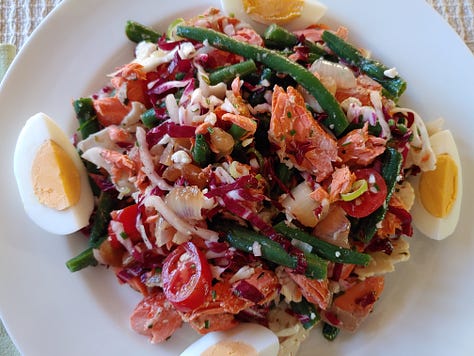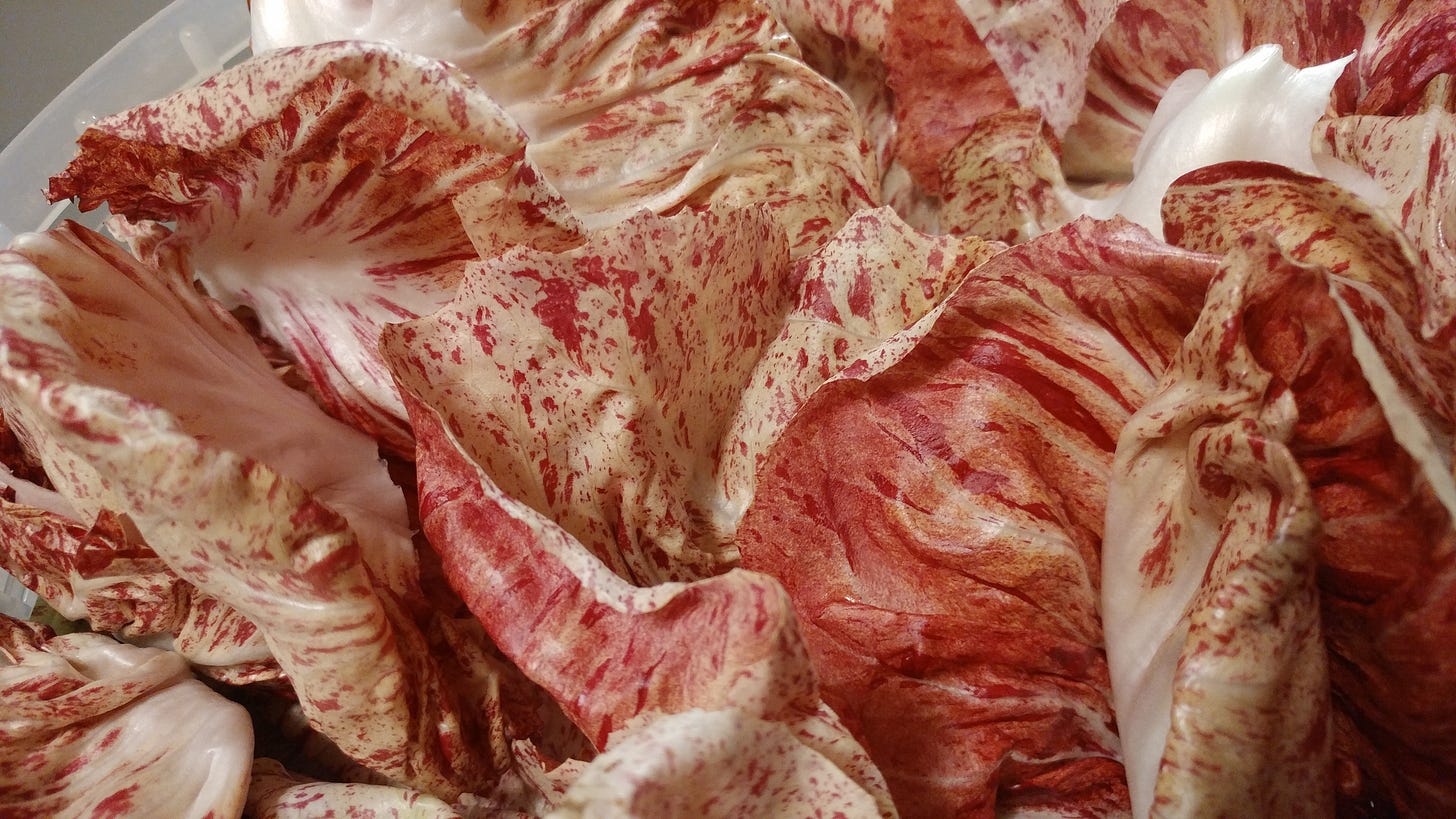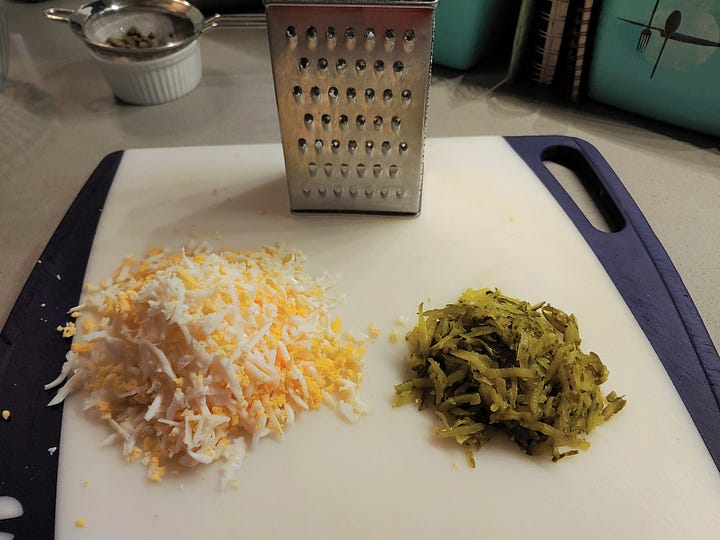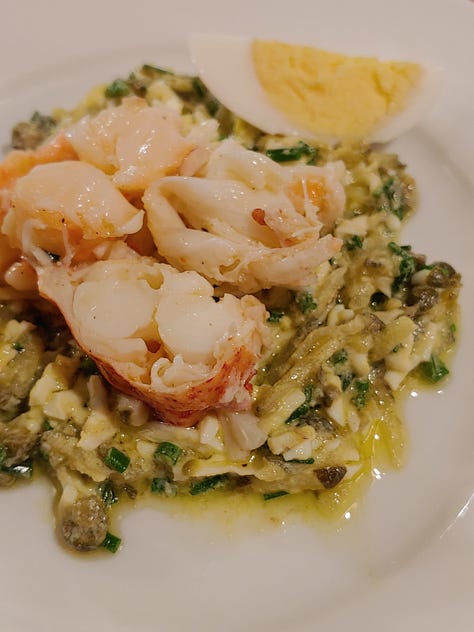Time’s propensity to fly is nothing new and certainly not seafood-related. I know it’s a sensation we all relate to, in a whole lot of different contexts. A couple examples on my mind right now are the wonder that we’re nearly two-thirds of the way through 2023, and the realization that some of the stories I’ll be sharing soon date back 30-plus years—where did that time go, for crying out loud?
And one more such time-flying measure is that my first anniversary of Substacking is just around the corner. I’ll touch on that a bit more next month, with a nod to my first issue that went out late September of last year. I hit that first “publish” button with lots of uncertainty about what I was getting into, what kind of energy and engagement I’d be able to build with seafood-focused content on this platform, based on the hodge-podge mix of experience and insights I’ve gained over the years. Layering over that a vision to create a place for connection. Connecting home cooks with info, ideas, and recipes that help them have the best experiences cooking seafood at home. Connecting readers across the seafood spectrum—from newbies to those in the biz—with stories, products, cool people doing interesting things, and other content that can enhance our appreciation of seafood. And connecting me on a regular basis with people who love (or at least have some degree of interest in) seafood, allowing me to cover a broader array of topics more frequently than I can in my cookbooks.
I’m so grateful for those of you who’ve joined me here, whether in the last couple of months, or dating back to my more fledgling posts. As I continue to develop my groove, make improvements in my sorely-lacking consistency of posts, and add more variety and personality to the content, I look forward to this community of readers growing. More folks joining the seafood-celebrating party and having conversations around great seafood experiences, so that I’m as much a host for fun and interesting engagement as I am the writer of this newsletter.



Summertime, salad-time
Contemplating seafood in salad form brings up so many potential angles for discussion. Diving into niçoise alone prompts potentially deep discussion, it’s on my list to get into at some point, complete with distinct perspectives from writer Waverly Root about what does—and does not—constitute a true salade niçoise as shared in his 1958 book The Food of France.
For now, a brief seasonal focus on the theme. In the universal quest to avoid any/all unnecessary extra heat in the house during super-hot days of summer, we seek out quick, little-or-no-cooking-required meals. The idea of salad is so open to variations and creativity, to me it’s the perfect focus for these occasions.
This is about off-the-cuff salad creations, taking inspiration from salads we may already know and love, but mostly driven by what we can make that’s delicious and satisfying with minimal effort when it’s simply too hot to do more.
What makes summertime salads-for-dinner extra slick is when you’ve got leftovers in the fridge that make assembling dinner even quicker. That can mean planning ahead a bit, cooking more fish or shrimp than you need for one meal, so the extra is ready for its salad appearance the next night. Or, as I did a couple weeks ago, after pulling some sausages off the grill one evening I put a sockeye fillet on the grill while the coals were still hot, a jump-start for the following dinner. Another option is cooking seafood in the cooler morning hours, to be tucked in the fridge for later. And you can certainly turn to ready-to-eat options such as bulk crabmeat, cooked shrimp, canned tuna, smoked salmon or trout, and tinned seafoods for potential salad stars.
Three things always in my pantry are lentils, farro and chickpeas, which I rely on often as a foundation or accent element when making salad for dinner (thrilled when I plan ahead and make extra lentils or farro from one meal to use later). Occasionally I’ll skip them altogether when I go heavy on the vegetables and seafood.
Among other components in most frequent rotation here are green beans (steamed), cauliflower (steamed or thin-sliced raw), zucchini (leftover grilled or diced/thin-sliced), radishes, cucumbers, tomatoes, green or sweet onion, Belgian endive, radicchio, small ‘salad’ turnips. Tender herbs of course, whether whole leaves or chopped—it’s a great time for them to shine. One extra bonus of many dinnertime salads is how well they hold up for a day or two in the fridge, ideal for a cool lunch or snack. If there are likely to be leftovers, I won’t use softer lettuces in these salads, since they go wilty with time.



A few specific ideas:
In Shellfish I included a salad that starts with steaming mussels, the cooked meat added to an herby vinaigrette. Finishing that salad is chickpeas, diced zucchini, slivered spinach, feta, and sun-dried tomatoes. It’s good right away, even better after sitting in the fridge for a few hours.
That salmon fillet cooked ahead on the grill one night I flaked into large pieces the next day. Then I whipped up a combination vaguely reminiscent of a chopped salad with blanched green beans, leftover grilled Walla Walla onions, green onions, chickpeas, radicchio, and tomatoes in an herb dressing, with hard-cooked eggs on the side—and the flaked salmon as the star. Aside from cooking the eggs and beans that morning, there was no extra heating needed.
A salad I make often that doesn’t usually include seafood, but could, is based on thinly-shaved raw cauliflower and cooked farro. Inspired by a great salad at RockCreek in Seattle, I usually add thinly-sliced celery and chopped tender celery leaves, toasted nuts (I use almonds or hazelnuts), shaved aged cheese (pecorino or Parmesan, I’ve also used aged cheddar), parsley and/or chives. I can see smoked trout or salmon being a delicious addition, or leftover grilled fish. I’ve served this with sardines on the side, maybe some of your favorite tinned seafood would be a fun addition? Play around, see how it goes. That’s among the joys of these salad creations, using what’s on hand (garden, farmers market, CSA delivery, fridge), combining favorite ingredients, getting creative with it.

Recipe Box: Gribiche with Shrimp (and other things)
A dozen years ago I wrote this post about gribiche sauce, which I’d become enamored with the year before. Gribiche is an old-school French sauce that’s less familiar than many of the French saucy standards. (It’s possible the sauce crossed my radar while I was in cooking school at La Varenne, I just don’t have memory of that.) Since that time I’ve made the piquant combination of hard-cooked eggs, capers, pickles, vinegar, and herbs many times for countless off-the-cuff dinner preparations.
Often, for whatever reason, I combine gribiche with cauliflower. Perhaps because cauliflower is such an ideal neutral partner for the sauce. I started there for dinner a couple weeks ago, adding cooked shrimp for a simple room-temp summertime meal. I also included gribiche among recipes I taught last month at the Sun Valley Culinary Institute, the preparation shared below that mixes chopped cooked shrimp with gribiche as an appetizer or picnic item served in endive leaves. An easy variation that just came to mind would be to salad-ify the combo, slicing the endive and tossing it with the shrimp and gribiche.
The version I included in Shellfish uses cooked lobster meat, lightly dressed and served on top of the gribiche for an elegant appetizer. It’d be a fabulous complement for any number of simply-cooked fish as well. On my list is playing around with gribiche more, to confirm it complements a range of seafoods as well as I think it will.
After that class I taught recently, a student came up to chat. He said that he was already a big fan of egg salad, and really enjoyed this piquant combination (add a couple extra eggs and surely this would make for an extra-delicious sandwich filling). But he was really taken with the simple tip of using a grater for the eggs and pickles. It’s a bit of a pain if using smaller cornichons, in which case a fine chop is good. For the eggs it’s a very fast technique with even results that are ideal for this preparation. I use the larger holes on my box grater.


Shrimp Gribiche with Endive
I’ve made this with large shrimp, coarsely chopped; I’m sure small bay shrimp would be great too, used as is. Choose larger heads of Belgian endive, so the leaves will be of good size for this use.
3 tablespoons white wine vinegar
2 teaspoons Dijon mustard
1/4 teaspoon kosher salt
Freshly ground black pepper
1/4 cup olive oil
3 large eggs, hard-cooked and cooled
1/4 cup coarsely grated or chopped pickles (about 12 cornichons or 2 medium dill pickles)
3 tablespoons finely chopped fresh chives
2 tablespoons coarsely chopped capers
8 to 10 ounces cooked shrimp, coarsely chopped if large
4 to 5 large heads Belgian endive
Combine the vinegar, mustard, salt, and a few grindings of black pepper in a medium bowl and blend with a fork. Blend in the olive oil until smooth.
Peel the hard-cooked eggs and coarsely grate or chop them. Add the eggs, pickles, chives, and capers to the dressing and toss lightly with the fork to evenly blend. Gently stir in the shrimp. Taste for seasoning, adding more salt or pepper to taste. (This can be prepared a few hours in advance, covered, and refrigerated.)
Just before serving, trim the stem ends from the endive and discard any blemished outer leaves. Separate the leaves and arrange the larger of them on a serving platter. Smaller interior leaves can be saved for another use.
To serve, spoon some of the shrimp-gribiche salad onto the broad end of each endive leaf. Serve right away.
Makes 4 to 6 servings







